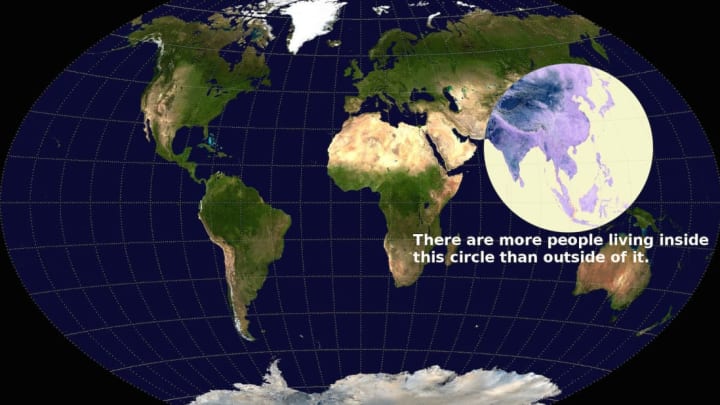The Earth gets more crowded each year. In just the past decade, the planet has welcomed about 1 billion new residents. The biggest contributors to the booming population are a handful of countries, and most of them fall within a 2500-mile radius.
As friend of Mental Floss Ken Jennings writes for Condé Nast Traveler, the Valeriepieris circle covers more than half the world’s population. China and India, the world’s two most populous nations, plus Indonesia (the fourth) and Pakistan (the sixth), are all part of a section of Earth that stretches 2500 miles in all directions from a central point near Hainan, China's southernmost area. Bangladesh, Japan, the Philippines, and Vietnam, which all place in the top 15 most populous countries, are also included.
Not only are the populations of these places high, they’re also dense. In Bangladesh’s capital of Dhaka, for instance, every square mile holds about 115,000 citizens. (For comparison, New York City, America's most densely populated city, counts roughly 27,000 per square mile.) That explains how this circle can house billions of humans while also containing a lot of open ocean and empty desert.
The Valeriepieris circle is named after the American Reddit user who first shared the map in 2013. His real name is Ken Myers, and he was inspired to create the graphic after visiting Manila in the Philippines for a teaching fellowship and seeing firsthand how many people were crammed into the tight area. The math was checked by Singapore economics professor Danny Quah years later, and he found that Myers had actually been generous with his calculations. Narrow down the circle to a 2050 mile radius, with Mong Khet in Myanmar as the center point, and it still fits close to half the world’s people.
[h/t Condé Nast Traveler]
